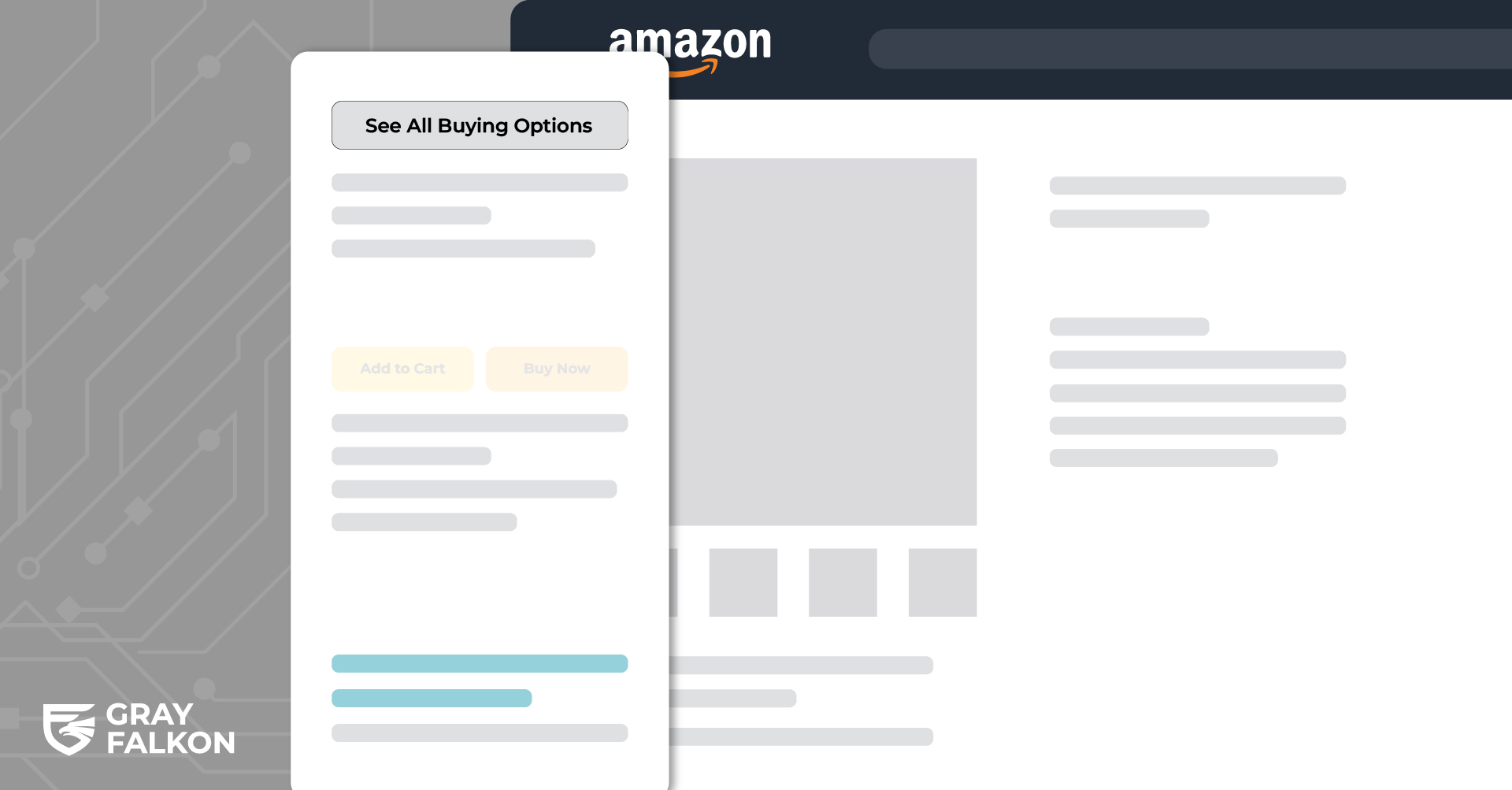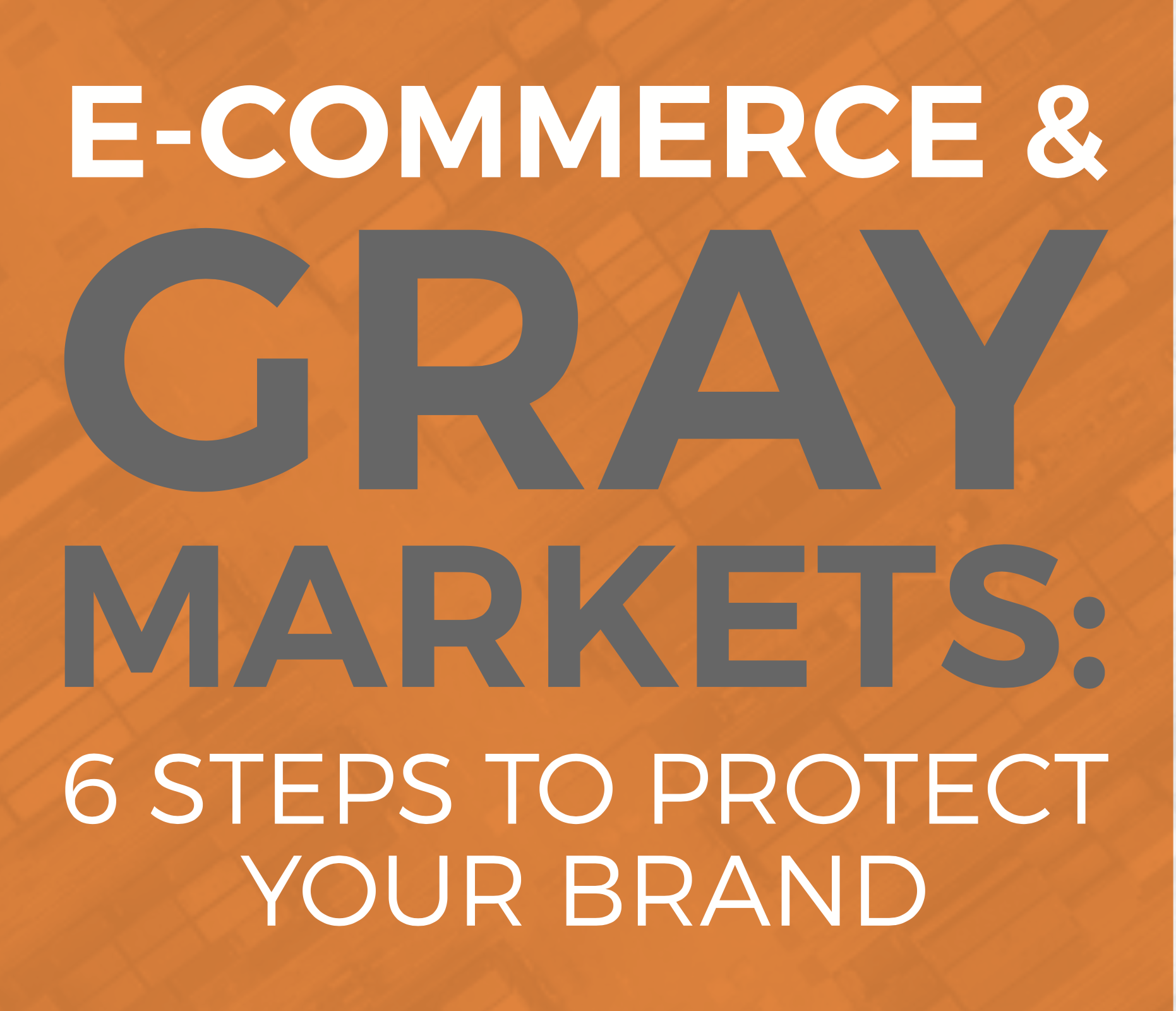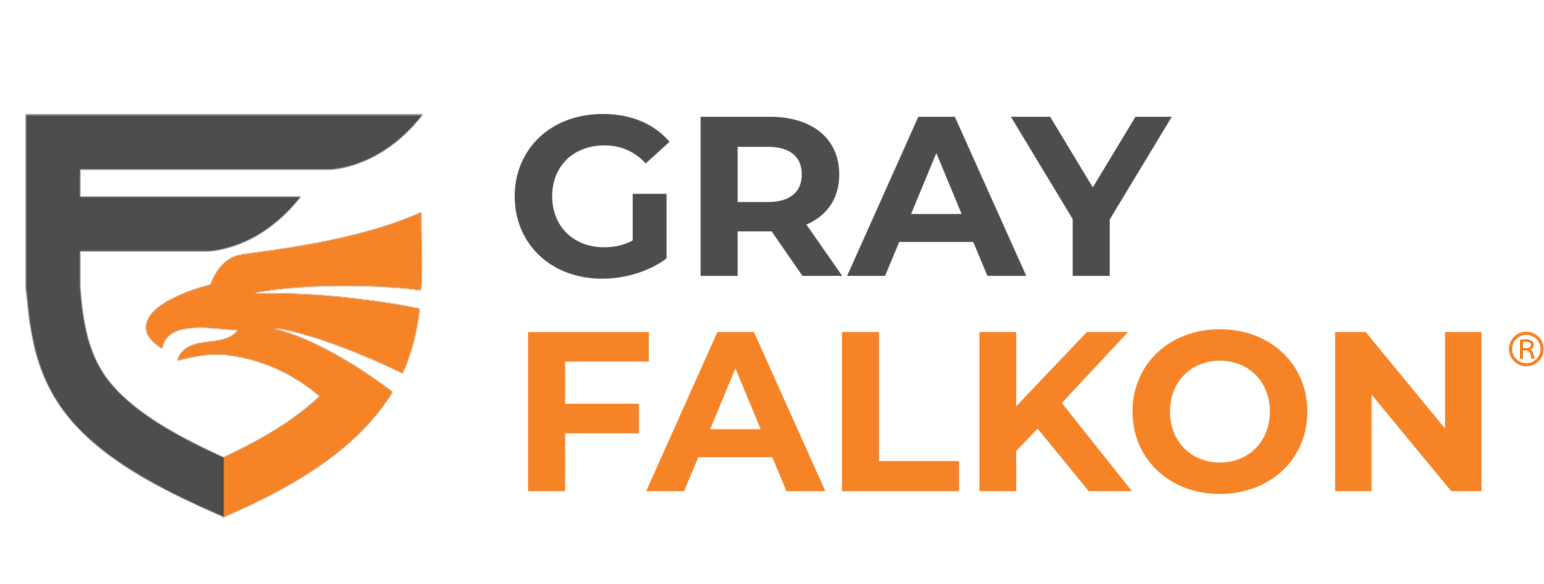
The Buy Box is one of the most powerful pieces of real estate on Amazon. When a shopper clicks “Add to Cart” or “Buy Now,” they’re buying from the seller featured in that box, giving that seller a massive advantage in conversion and visibility. But what happens when the Buy Box disappears?
Buy Box suppression is Amazon’s way of telling sellers, “Something isn’t right.” Instead of those one-click purchase options, shoppers are forced to click through to a less convenient “See All Buying Options” page. Fewer clicks mean fewer sales, and for brands, that can mean sudden and significant revenue drops.
Whether you’re managing your own Amazon storefront or relying on third-party sellers, it’s critical to understand what causes Buy Box suppression, how it impacts brand performance, and what steps you can take to avoid it.
Featured Offer vs. Buy Box: What’s the Difference?
If you’ve been selling on Amazon for years, you’re likely familiar with the term Buy Box. However, in 2023, Amazon officially renamed it the Featured Offer, a change aimed at better reflecting the competitive nature of seller selection on a product detail page. While the terminology may be different, the mechanics remain largely the same. The Featured Offer is still the default seller customers buy from when they click “Add to Cart” or “Buy Now.”
Despite the rebrand, most sellers and industry professionals continue to refer to it as the Buy Box. For the sake of clarity and simplicity, we’ll refer to the Featured Offer as the Buy Box throughout this blog.
If you want to learn more about this change, check out our blog “Amazon Buy Box to Featured Offer — What Changed” for additional detailed information.
What Is Buy Box Suppression?
Buy Box suppression occurs when Amazon removes the “Add to Cart” and “Buy Now” buttons from a product listing. Instead of a convenient purchase option, shoppers are shown a “See All Buying Options” link, which directs them to a list of available sellers.
This subtle change has a significant impact: it introduces friction. When customers can’t make a purchase in a single click, many will abandon the listing entirely. As a result, suppressed listings often see a steep decline in conversion rates and overall sales velocity.
Amazon typically suppresses the Buy Box when a listing no longer meets its Featured Offer eligibility criteria, most often tied to pricing concerns. Specifically, the Marketplace Fair Pricing Policy is the most common trigger. If Amazon detects that a product’s price is uncompetitive, either compared to similar listings on Amazon or on other platforms, it may suppress the Buy Box to protect the customer experience.
But pricing isn’t the only issue. Other triggers include:
- Inconsistent or inaccurate listing content: Mismatched product titles, descriptions, or images can create confusion and prompt suppression.
- Slow or unreliable fulfillment: If a seller’s delivery performance lags, Amazon may view the listing as a risk to customer satisfaction.
- Low seller performance metrics: Poor ratings, high return rates, or frequent customer complaints can all contribute.
Importantly, Buy Box suppression doesn’t mean your product isn’t available, it’s just harder to buy. And on a platform like Amazon, even small friction points can lead to lost sales and brand damage.
Why Amazon Suppresses the Buy Box
Amazon’s decision to suppress the Buy Box isn’t arbitrary, it’s driven by a commitment to customer trust, platform consistency, and competitive value. From Amazon’s perspective, the Buy Box is a stamp of confidence. If a listing doesn’t meet key expectations, removing that convenience is a way to prevent customer dissatisfaction. However, for brands, this action can feel harsh or unwarranted, especially when the underlying cause may be outside of their direct control.
Buy Box suppression often stems from three marketplace tensions:
Price Integrity vs. Distribution Complexity
Amazon wants to ensure products on its platform are priced fairly. But with open distribution and multiple third-party sellers, prices can fluctuate wildly. Even if a brand maintains its own pricing strategy, a rogue or unauthorized seller offering steep discounts or selling outdated or returned stock can trigger suppression.
Seller Accountability vs. Brand Visibility
Amazon holds sellers accountable for poor listing quality or fulfillment issues. If a third-party seller is using a brand’s ASIN but provides inaccurate details or slow shipping, the listing’s eligibility for the Buy Box may be impacted, hurting the brand’s visibility even if it’s not the seller in question.
Marketplace Scale vs. Quality Control
With millions of sellers and listings, Amazon uses automated systems to identify and suppress listings that might hurt the customer experience. But this scale means nuance is lost. A single policy violation, real or perceived, can lead to suppression without warning, often leaving brands scrambling to identify the root cause.
Buy Box suppression is Amazon’s way of maintaining high standards at scale, but for brands, it often creates more questions than answers.
How Buy Box Suppression Impacts Brands
When the Buy Box disappears, sales slow, often dramatically. Customers are conditioned to click “Add to Cart” or “Buy Now,” and when those buttons vanish, the friction increases. Many shoppers never take the extra step to view “Other Sellers on Amazon,” especially on mobile.
For brands, this doesn’t just mean a dip in sales, it can spark a broader set of problems:
- Loss of Product Visibility: Suppressed listings are less likely to appear in prominent placements, like Amazon search results or Sponsored Products ads, limiting traffic to affected ASINs.
- Customer Confusion: Shoppers may think a product is out of stock or unavailable, damaging their perception of your brand’s reliability and availability.
- Weakened Performance Metrics: If a product’s conversion rate drops, it can impact your rankings and advertising efficiency across Amazon.
- Misattributed Blame: Customers don’t distinguish between authorized and unauthorized sellers. When a third-party seller triggers suppression through poor pricing practices or fulfillment delays, your brand reputation suffers all the same.
Buy Box suppression is a silent disruptor. The listing remains active, the product is still there, but the momentum stalls. For brands that rely on consistency, particularly during peak shopping seasons or major launches, even brief suppression can have a ripple effect across performance metrics, inventory planning, and advertising ROI.
How to Prevent Buy Box Suppression
Avoiding Buy Box suppression requires brands to be proactive, not just with their listings but with how their products are represented across the entire eCommerce landscape. While Amazon doesn’t provide a guaranteed formula, these strategies can significantly reduce the risk:
Maintain Pricing Consistency Across Channels
Amazon watches for price disparities. If your product is sold for less on other sites like Walmart, eBay, or your own DTC store, Amazon may view your offer as uncompetitive and suppress the Buy Box. Brands should work closely with authorized sellers to ensure pricing remains consistent across all platforms.
Limit the Number of Uncontrolled Sellers
The more third-party sellers attached to a listing, the higher the risk of inconsistent pricing, shipping times, and product quality, all factors that contribute to suppression. Enforcing a clear reseller policy and limiting marketplace access to authorized sellers helps maintain offer integrity and consistency.
Monitor Listings for Policy Violations
Buy Box suppression can occur due to listing errors, outdated content, or missing details. Make sure all product data, including titles, images, bullet points, and descriptions, is accurate, up-to-date, and compliant with Amazon’s standards. Listings with conflicting or incomplete information may trigger suppression flags in Amazon’s system.
Monitor Top Seller Performance (Even If It’s Not You)
Even if you’re not the seller causing issues, Amazon doesn’t differentiate between authorized and unauthorized parties on a listing. That means your Buy Box can be suppressed due to poor seller performance from a rogue reseller. Monitoring who’s selling your products is essential to protect the integrity of the offer.
Partner with a Brand Protection Provider
Manual monitoring can only go so far. Partnering with a solution like Gray Falkon ensures your listings are continuously scanned, unauthorized sellers are removed, and violations are reported swiftly, reducing the risk of Buy Box suppression caused by third-party behavior.
How Gray Falkon Helps Prevent Buy Box Suppression and Safeguard Your Brand
Buy Box suppression may appear as a pricing issue on the surface, but it’s often a symptom of deeper brand control challenges. Gray Falkon helps brands prevent these disruptions through a powerful combination of real-time monitoring, smart enforcement, and strategic insights, which are all tailored for the modern marketplace environment.
Real-Time AI-Powered Monitoring Across Amazon and Beyond
Our proprietary AI technology continuously scans Amazon, Walmart, and other marketplaces to identify unauthorized sellers, policy violations, and listing inconsistencies in real time. This allows brands to:
- Detect and respond to threats before they escalate into Buy Box suppression or sales loss.
- Monitor seller behavior across your entire catalog, not just top-selling ASINs.
- Gain peace of mind knowing there are no blind spots or manual gaps in coverage.
Automated Violation Reporting That Drives Results
Our Full Deployment solution doesn’t just identify problems, it takes action to help solve them. When unauthorized sellers or policy violations are detected, our system prepares and submits marketplace-compliant reports for enforcement. This helps:
- Reduce the window of time violators can impact your listings.
- Ensure consistent, accurate, and scalable enforcement without bogging down internal resources.
- Improve marketplace responsiveness and resolution times by delivering clean, structured data with every report.
Gain Insights With Our Marketplace Brand Protection Portal
Our Marketplace Brand Protection Portal gives you visibility into the impact of your enforcement strategy with intuitive dashboards that surface both the big picture and fine details. A few key dashboards include:
- Impact Dashboard: See how many sellers have been removed, how many listings have been taken down, and how much suppressed revenue has been recovered.
- Products Dashboard: Understand which ASINs are most affected and how seller activity fluctuates over time.
- Sellers Dashboard: Track average inventory levels, recurring violators, new sellers and the footprint of unauthorized sellers.
- Consumer Experience (CX) Audit Dashboard: Capture real-world evidence of violations, from pricing to packaging to product authenticity.
With Gray Falkon, your team doesn’t have to guess who’s selling your products or why the Buy Box is suppressed. You gain real-time insights, automated tools, and expert guidance to ensure your listings are protected and your brand is positioned for long-term success.
Maintain Control of the Buy Box and your Brand
Buy Box suppression may look like a pricing problem, but for most brands, it’s a signal that something bigger is broken. Whether it’s unauthorized sellers undercutting your pricing, inconsistent inventory management, or policy violations slipping through the cracks, losing control of the Buy Box means losing control of your customer experience.
At Gray Falkon, we help brands solve the real problem: enforcement at scale. Through AI-powered monitoring, behavior-based violation detection, and automated reporting, we give brands the tools to stop Buy Box suppression before it starts. Instead of reacting to disruptions, you get a proactive, measurable strategy for marketplace control. Schedule a demo today.



